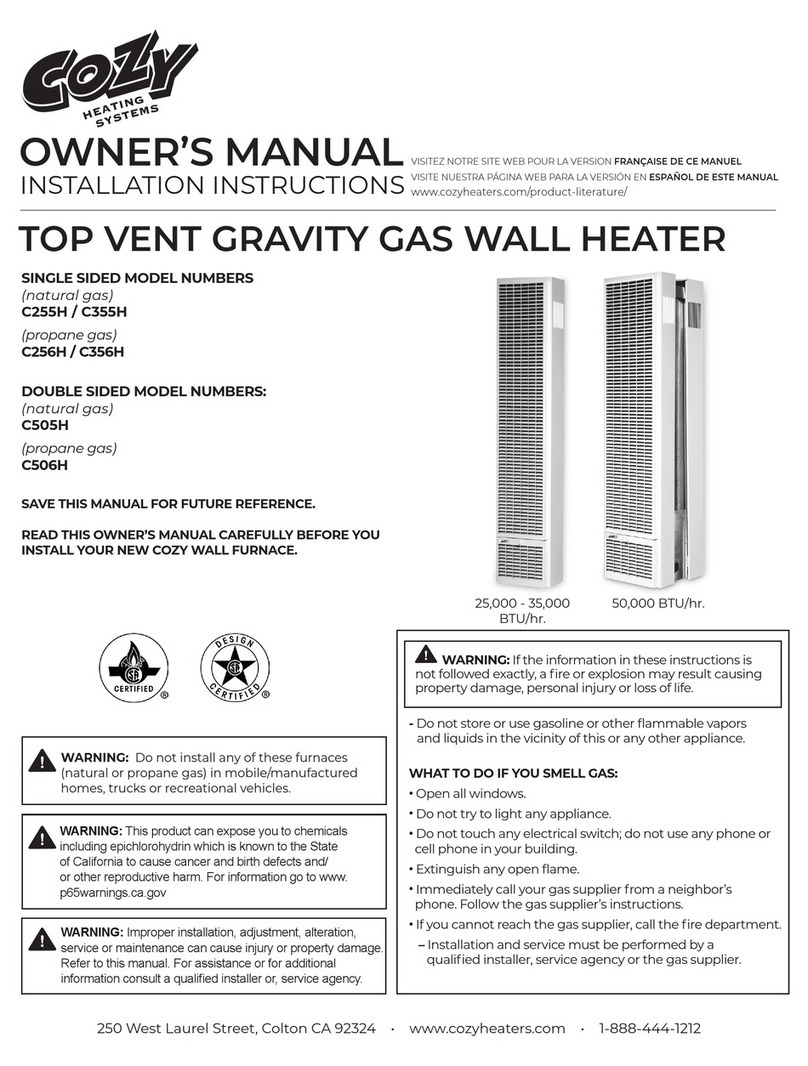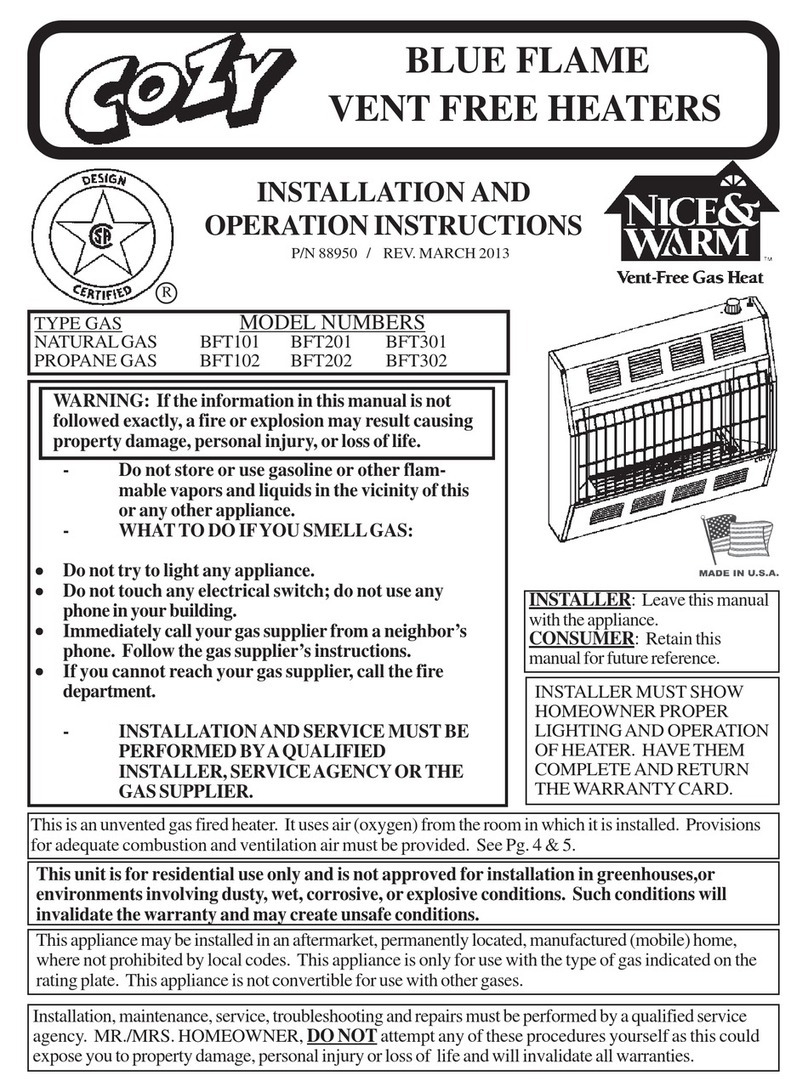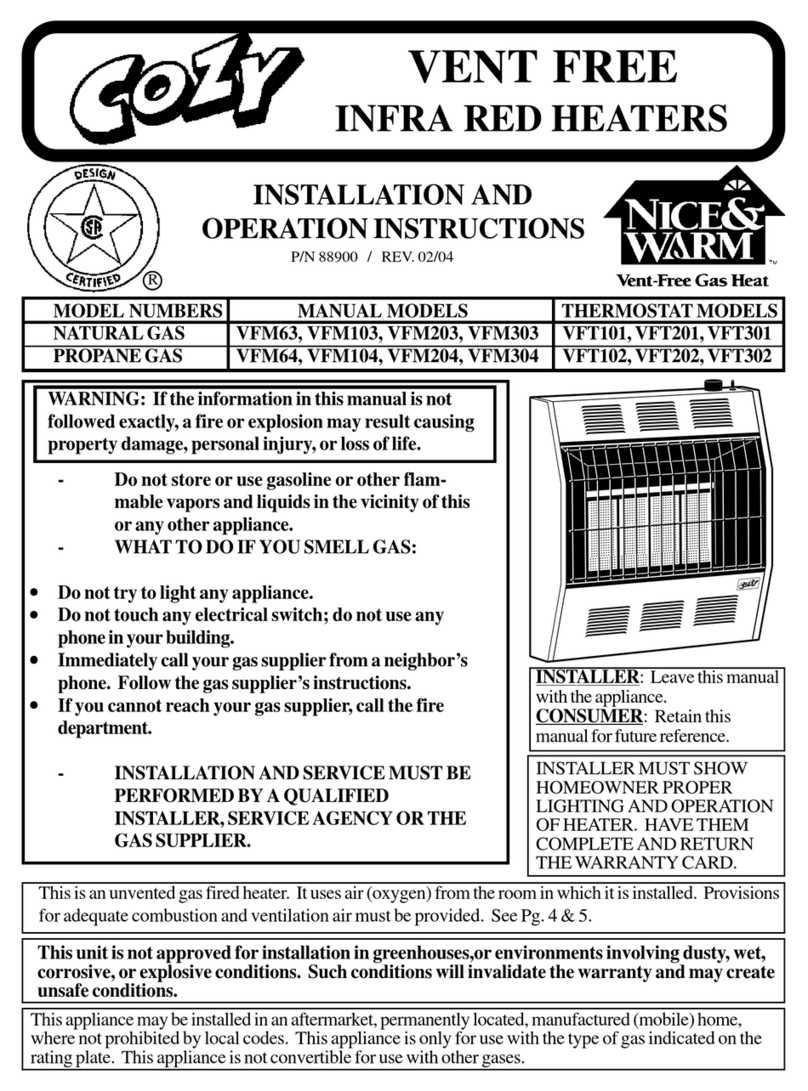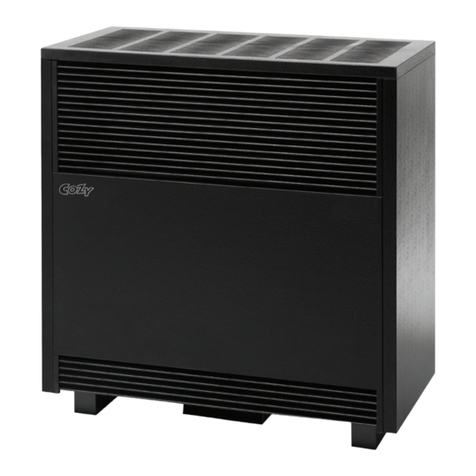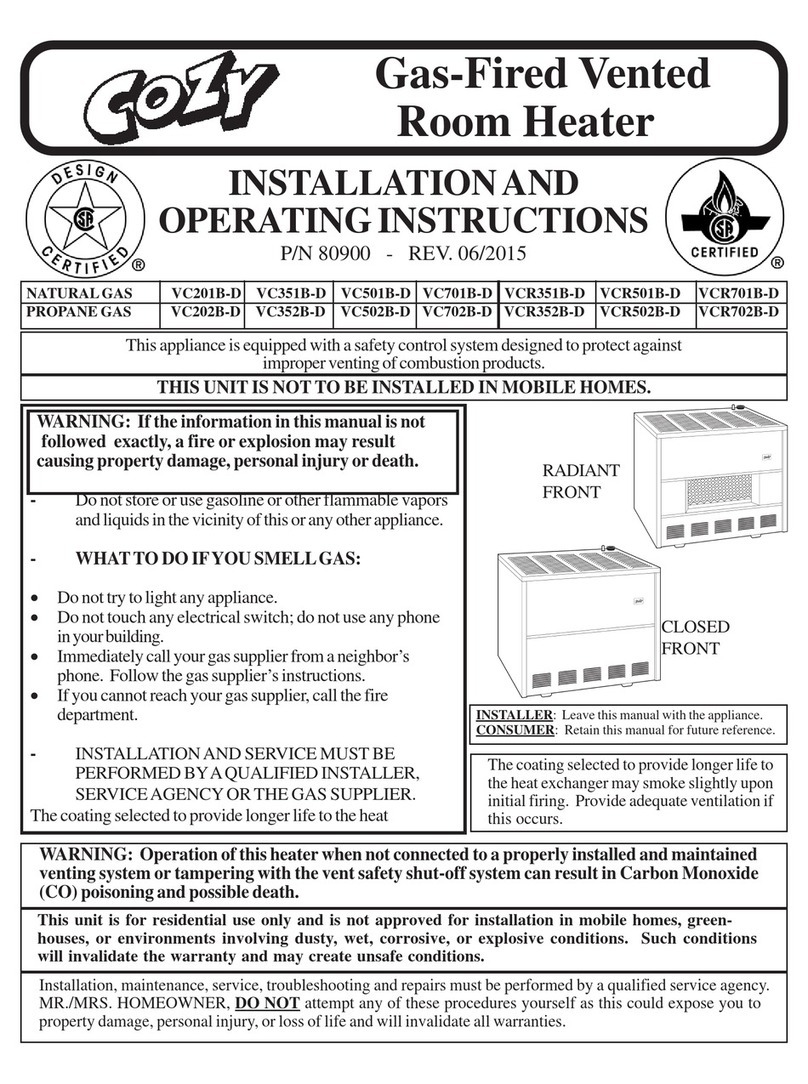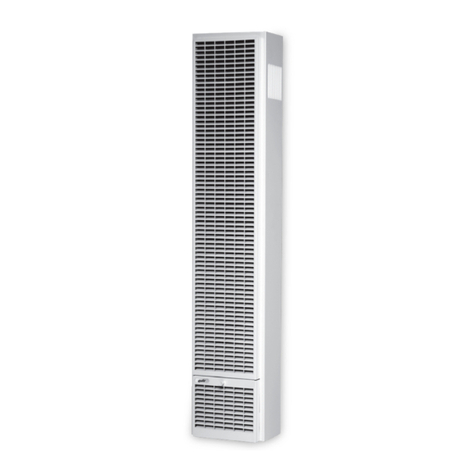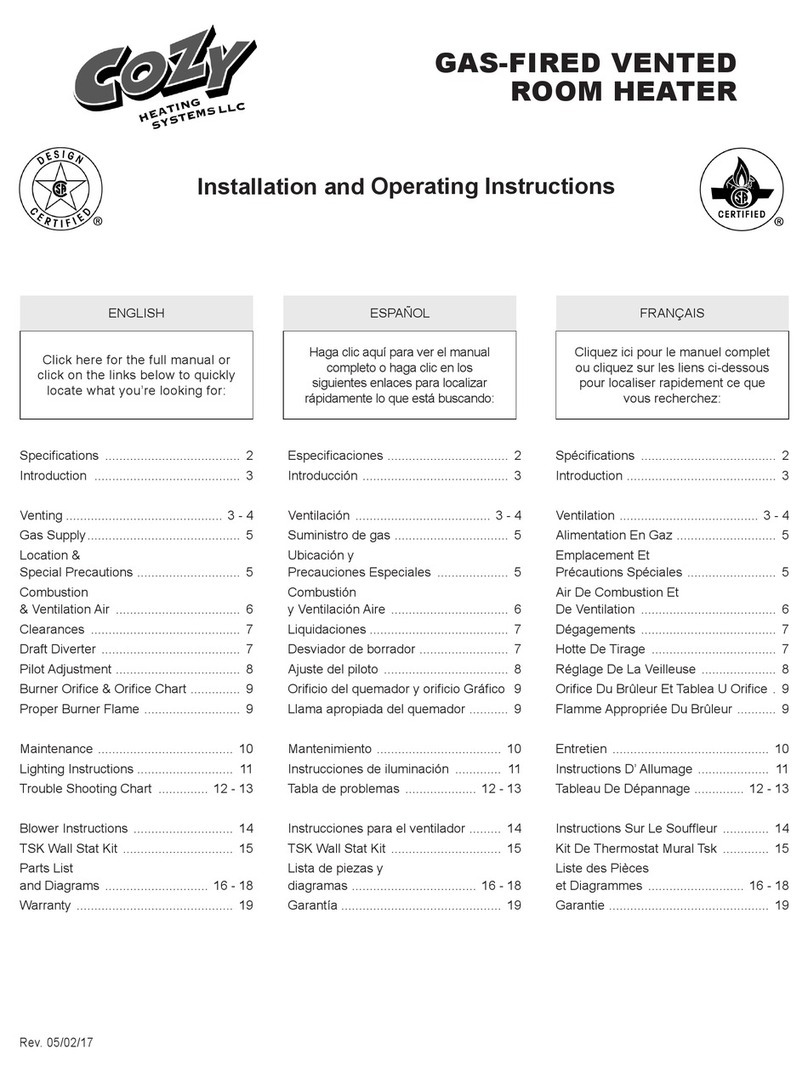
10. Close pilot lighting hole cover and casing
door.
11. Turn gas control knob counterclockwise
to “ON”.
12. Turn temperature control knob to desired setting.
MODELS: VC201A-H,VC202A-H,VC351A-H,VC352A-H, VC501A-H,VC502A-H, VC701A-H,
VC702A-H,VCR351A-H,VCR352A-H,VCR501A-H,VCR502A-H, VCR701A-H,VCR702A-H
FOR YOUR SAFETY READ BEFORE LIGHTING
WARNING: Ifyoudo not followtheseinstructions exactly,a fireorexplosion mayresult
causingproperty damage,personal injuryor lossof life.
A. This appliance hasa pilotwhich must belighted byhand.
When lighting the pilot, follow these instructions ex-
actly.
B. BEFORELIGHTINGsmellallaroundtheappliancearea
for gas. Be sure to smell next to the floor because some
gas is heavier than air and will settle on the floor.
WHATTODOIFYOUSMELLGAS:
•Do not try to light any appliance.
•Do not touch any electric switch; do not use any phone
in your building.
•Immediately call your gas supplier from a neighbor’s
phone. Follow the gas supplier’s instructions.
•Ifyoucannot reach yourgas supplier,call thefire department.
C. Use only your hand to push in or turn the gas control knob.
Never use tools. If the knob will not push in or turn by
hand,don’t trytorepair it,call a qualifiedservice technician.
Force or attempted repair may result in a fire or explosion.
D. Do not use this appliance if any part has been under water.
Immediately call a qualified service technician to inspect
the appliance and to replace any part of the control system
and any gas control which has been under water.
LIGHTING INSTRUCTIONS
1. STOP! Read the information on the safety label.
2. Turn temperature control knob to “OFF” or it’s
lowest position.
3. Depress and turn gas control knob clockwise
to “OFF” position.
4. Wait five (5) minutes to clear out any gas. Then
smell for gas, including near the floor. If you smell
gas, STOP! Follow “B” in the information on the
safety label. If you don’t smell gas, go to the next
step.
5. Open casing door and pilot lighting hole cover.
6. Findpilot. (Followmetalpilottubefrom gas control).
7. Locate red piezo ignitor button on top of heater.
8. Turn gas control knob counterclockwise to
“PILOT”.
9. Pushin gas controlknob andholdin. Immediately
begin a series of pushing and releasing the red
piezo ignitor button, while observing the pilot.
Continue to spark until pilot is lit. Continue to
hold the gas control knob in for about one (1)
minuteafter the pilotis lit. Release thegas control
knob and it will pop back up. Pilot should remain
lit. If pilot goes out, repeat steps 3 thru 9.
• If knob does not pop up when released, STOP
andimmediately callyour service technician
or gas supplier.
•If the pilot will not stay lit after several tries,
turn the gas control knob to “OFF” and call
your service technician or gas supplier.
TO TURN OFF GAS TO APPLIANCE
1. Turn the temperature control knob to it’s lowest setting.
2. Push in gas control knob slightly and turn clockwise to “OFF”. Do not force.
Page 10
Pilot is located on
end of combustion
chamber above
burner.
Gas Control Knob
NOTE: Knob can
not be turned from
“PILOT”to “OFF”
unless knob is
pushed in slightly.
Do not force.



















